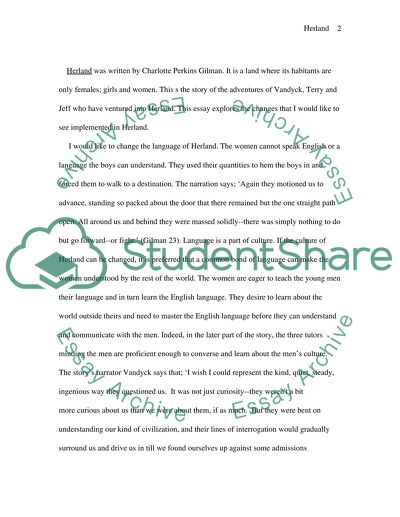Cite this document
(Herland Story by Charlotte Perkins Gilman: the Social Infrastructure Essay, n.d.)
Herland Story by Charlotte Perkins Gilman: the Social Infrastructure Essay. Retrieved from https://studentshare.org/literature/1521830-charlotte-perkins-gilmans-herland
Herland Story by Charlotte Perkins Gilman: the Social Infrastructure Essay. Retrieved from https://studentshare.org/literature/1521830-charlotte-perkins-gilmans-herland
(Herland Story by Charlotte Perkins Gilman: The Social Infrastructure Essay)
Herland Story by Charlotte Perkins Gilman: The Social Infrastructure Essay. https://studentshare.org/literature/1521830-charlotte-perkins-gilmans-herland.
Herland Story by Charlotte Perkins Gilman: The Social Infrastructure Essay. https://studentshare.org/literature/1521830-charlotte-perkins-gilmans-herland.
“Herland Story by Charlotte Perkins Gilman: The Social Infrastructure Essay”, n.d. https://studentshare.org/literature/1521830-charlotte-perkins-gilmans-herland.


